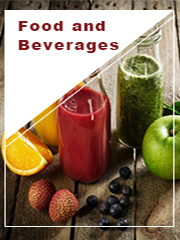Report overview
Food Inclusions are added to the food products to enhance visual appearance, texture and add flavor. Some of the widely used food inclusions are chips and flakes, wafer, jellies, dried fruits and nuts.
This report aims to provide a comprehensive presentation of the global market for Food Inclusions, with both quantitative and qualitative analysis, to help readers develop business/growth strategies, assess the market competitive situation, analyze their position in the current marketplace, and make informed business decisions regarding Food Inclusions. This report contains market size and forecasts of Food Inclusions in global, including the following market information:
Global Food Inclusions Market Revenue, 2018-2023, 2024-2029, ($ millions)
Global Food Inclusions Market Sales, 2018-2023, 2024-2029, (K MT)
Global top five Food Inclusions companies in 2022 (%)
The global Food Inclusions market was valued at US$ 10320 million in 2022 and is projected to reach US$ 15350 million by 2029, at a CAGR of 5.8% during the forecast period. The influence of COVID-19 and the Russia-Ukraine War were considered while estimating market sizes.
The European market is estimated to account for the largest share in 2018. This can primarily be attributed to factors such as the region?s large-scale production and domestic consumption of food inclusions, which is fueled by food & beverage manufacturers? urge for product innovation with the use of novel ingredients to cater to consumer indulgence. The market in Asia Pacific is projected to grow at the highest CAGR, owing to the rise in consumption of inclusions and their innovative usage in line with the flavor profile and other consumer requirements, along with the Westernization of diets. The resultant increase in the final price of end products acts as a restraint for the growth of the food inclusions market.
We surveyed the Food Inclusions manufacturers, suppliers, distributors and industry experts on this industry, involving the sales, revenue, demand, price change, product type, recent development and plan, industry trends, drivers, challenges, obstacles, and potential risks.
Total Market by Segment:
Global Food Inclusions Market, by Type, 2018-2023, 2024-2029 ($ Millions) & (K MT)
Global Food Inclusions Market Segment Percentages, by Type, 2022 (%)
Chocolate
Fruit & Nut
Flavored Sugar & Caramel
Confectionery
Others
Global Food Inclusions Market, by Application, 2018-2023, 2024-2029 ($ Millions) & (K MT)
Global Food Inclusions Market Segment Percentages, by Application, 2022 (%)
Cereal Products, Snacks and Bars
Bakery Products
Dairy & Frozen Desserts
Chocolate & Confectionery Products
Others
Global Food Inclusions Market, By Region and Country, 2018-2023, 2024-2029 ($ Millions) & (K MT)
Global Food Inclusions Market Segment Percentages, By Region and Country, 2022 (%)
North America
US
Canada
Mexico
Europe
Germany
France
U.K.
Italy
Russia
Nordic Countries
Benelux
Rest of Europe
Asia
China
Japan
South Korea
Southeast Asia
India
Rest of Asia
South America
Brazil
Argentina
Rest of South America
Middle East & Africa
Turkey
Israel
Saudi Arabia
UAE
Rest of Middle East & Africa
Competitor Analysis
The report also provides analysis of leading market participants including:
Key companies Food Inclusions revenues in global market, 2018-2023 (Estimated), ($ millions)
Key companies Food Inclusions revenues share in global market, 2022 (%)
Key companies Food Inclusions sales in global market, 2018-2023 (Estimated), (K MT)
Key companies Food Inclusions sales share in global market, 2022 (%)
Further, the report presents profiles of competitors in the market, key players include:
Cargill
ADM
Barry Callebaut
Kerry
Tate & Lyle
Agrana
Sensient Technologies
Puratos Group
Sensoryeffects
Taura Natural Ingredients
Georgia Nut Company
Inclusion Technologies
Nimbus Foods
IBK Tropic
Trufoodmfg
Foodflo International
Confection By Design
Outline of Major Chapters:
Chapter 1: Introduces the definition of Food Inclusions, market overview.
Chapter 2: Global Food Inclusions market size in revenue and volume.
Chapter 3: Detailed analysis of Food Inclusions manufacturers competitive landscape, price, sales and revenue market share, latest development plan, merger, and acquisition information, etc.
Chapter 4: Provides the analysis of various market segments by type, covering the market size and development potential of each market segment, to help readers find the blue ocean market in different market segments.
Chapter 5: Provides the analysis of various market segments by application, covering the market size and development potential of each market segment, to help readers find the blue ocean market in different downstream markets.
Chapter 6: Sales of Food Inclusions in regional level and country level. It provides a quantitative analysis of the market size and development potential of each region and its main countries and introduces the market development, future development prospects, market space of each country in the world.
Chapter 7: Provides profiles of key players, introducing the basic situation of the main companies in the market in detail, including product sales, revenue, price, gross margin, product introduction, recent development, etc.
Chapter 8: Global Food Inclusions capacity by region & country.
Chapter 9: Introduces the market dynamics, latest developments of the market, the driving factors and restrictive factors of the market, the challenges and risks faced by manufacturers in the industry, and the analysis of relevant policies in the industry.
Chapter 10: Analysis of industrial chain, including the upstream and downstream of the industry.
Chapter 11: The main points and conclusions of the report.
